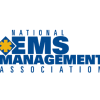After establishing your social media policy, you need to establish a social media team that will take responsibility for content. That team will likely include your public information officer or other company spokesperson, says Greg Friese, co-founder of PIOSocialMediaTraining.com.
All organizations should have a Facebook page (as opposed to a Facebook profile, which is just for people—not companies, brands or organizations). Facebook profiles enable more advanced features, such as the ability to have multiple administrators.
Stumped about what to post? How about announcements about the purchase of new equipment; awards and other employee recognition; news about a cardiac arrest survival (with the patient’s consent, of course); or a new class of paramedic graduates. You can also answer questions the community may have, such as why they might see an ambulance parked on a particular corner, or how to arrange a tour of the station.
All organizations should also have their name registered with Twitter, says David Konig, an EMT and co-founder of PIOSocial
MediaTraining.com.
Twitter, a micro-blogging site in which users are limited to 140 characters, is a great tool for letting “followers” know about fires, accidents or other news. Even if you’re not yet sure how you’d use it, register anyway. The Houston Fire Department learned that lesson the hard way after two private citizens registered a HoustonFireDept Twitter account, began to “tweet” about accidents they heard about on scanners and now have more than 1,000 followers. The actual fire department had to play catch-up, later registering cohoustonfire, which has about half as many followers.
Though some employers are nervous about allowing employees to post information online or actually prohibit them from making any Facebook status updates while on the job, that’s a knee-jerk, difficult-to-enforce policy, Konig says. Instead, employers’ social media policy should spell out the types of status updates that are permissible at work.
Those might include information about a recent training; a picture of a newly washed ambulance; or news about a promotion or other award. “Employers need to accept that [social media] is here to stay and is a powerful tool to communicate value to our communities, and we should engage our employees in communicating value to our communities,” says EMS attorney Steve Wirth.
One of the goals of Twitter, Facebook and even Linked In (on which you can post information about the company, such as the number of responses in the past month) is to drive people to your website, where you can post videos and other information that builds your reputation. That’s especially important given cuts in both newsrooms and pressure on the budgets of EMS and fire agencies.
“We need to be able to tell our own stories,” Konig says. “They’re not necessarily going to do it for us.” If you want to see an example of an EMS agency making the most of social media possibilities, Friese recommends the Medic One Foundation on Twitter and King County Medic One on Facebook.
“One year ago today you were called to my head on crash with a very big tree … Thank you for getting me out of the car and starting cpr to keep me alive … I can’t thank you all enough for what you did!” wrote Wendalyn I. Blangy in a King County Facebook post.
Just a few hours after her post, King County responded: “Ms. Blangy, we are thrilled to hear that you are doing well! Thank you for taking the time to share your story and we wish you continued success in your recovery!”
A few years ago, Blangy might have written a letter that got posted on a bulletin board at the station. Today, she can thank her rescuers in a very public way. By responding quickly, King County Medic One made the exchange interactive, one of the key reasons people use social media, Friese says.
“They had a place for her to say ‘thank you,’ they were monitoring it, and they interacted with her right away,” Friese says. “That’s the way to do it.”
Other posts on the site include information on preparing for an earthquake; a reminder on the first day of school to drive slowly through neighborhoods and school zones; and a link to a positive Seattle-Times story about quick-thinking Medic One paramedics who helped save the feet of a girl whose legs got tangled in a rope in a freak accident on a power boat. And the day the little girl threw out the first pitch at a Seattle Mariners game, the Medic One Foundation tweeted the news.
Of course, the public-ness of the comments cuts both ways—not everyone is going to be thrilled with you. If there is a negative post, don’t just delete it, Friese says. Instead, respond quickly and offer to follow up with the person who posted to get more details offline.
“When somebody is unsatisfied with our service, we want to know. And we want to help solve that problem,” he says. “I would handle it by writing back as soon as possible, just as if they were calling you on the phone. You might write, ‘We’re sorry to hear you’re disappointed. We want to follow up with you privately to learn more about this incident and hear what happened.’”
Expressing concern and responding promptly helps diffuse anger, according to Friese. “And you’re more likely to get other people rallying to your cause if you engage with the person complaining,” he says.
Another thing to keep in mind: It’s always good to keep things fresh on your site. This will not only encourage people to keep coming to it to see what’s new, but if you do have a negative comment, it gets pushed farther down onto the page. Most people only look at the first few posts and don’t bother to go back and view older posts, so that problem comment disappears rather quickly, Friese says.












